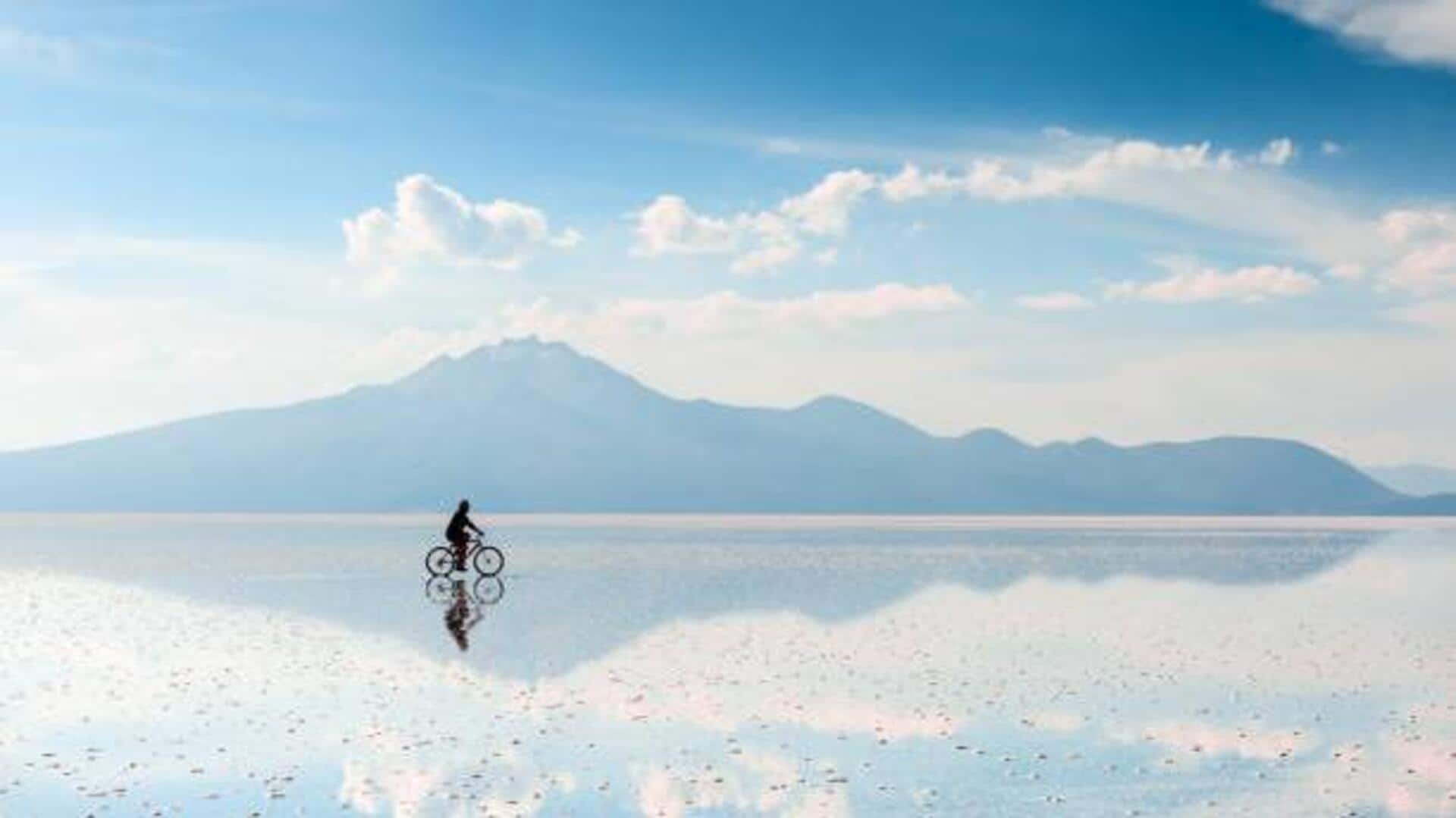
Cycling across Botswana's salt pans: A guide
What's the story
Botswana's salt pans, the remains of ancient lakes, provide a one-of-a-kind biking landscape. These massive, flat stretches enable you to be up-close with nature and observe wildlife. Here's some insights for those planning a bike tour in this unique part of the world, stressing on how you should see its beauty and ecological importance for yourself.
Terrain insights
Understanding the terrain
The salt pans are defined by their flatness and boundless horizons. The surface is mostly hard-packed, which is ideal for biking. However, during some seasons, portions of the pans can be muddy or get flooded from rain. It's important to plan your trip during the dry season for the best biking conditions. The terrain offers little shade, so sun protection is a must.
Wildlife Insights
Wildlife encounters
While biking through Botswana's salt pans, you can come across a number of wildlife species that call this unique ecosystem home. Animals like zebras and wildebeests often migrate across these lands in search of food and water. Birdwatchers will also get delight from spotting flamingos and other bird species that visit the pans during certain times of the year.
Gear preparation
Preparing your gear
Proper gear preparation is essential for a successful bike tour in Botswana's salt pans. It is recommended to go for a sturdy mountain bike with wide tires to effectively handle different surfaces. Also, make sure to carry enough water supplies, as there are limited fresh water sources along the route. Further, pack lightweight clothing fit for hot temperatures to make your ride comfortable.
Safety tips
Navigating safely
Safety should be your top priority when heading out to remote areas, like Botswana's salt pans, on a bike. It is best to travel with a guide who knows the region well or join an organized tour group. They are aware of local conditions and potential hazards, such as sudden weather changes or wildlife encounters on your way.